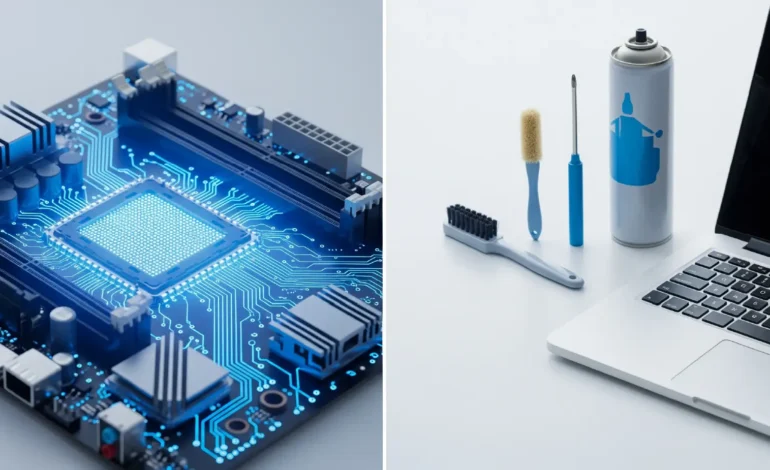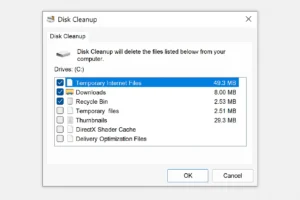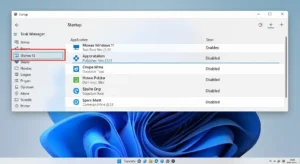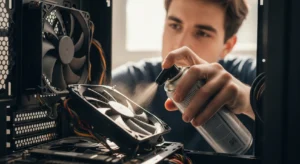The Ultimate Computer Maintenance Checklist: 10 Steps for a Faster PC (2025)

The Ultimate Computer Maintenance Checklist: 10 Steps for a Faster PC (2025)
Remember the day you first unboxed your new computer? The lightning-fast boot times, the instant application launches, the seamless multitasking. Over time, however, even the most powerful machines can start to feel sluggish, cluttered, and slow. This gradual decline isn’t inevitable; it’s often the result of digital clutter and a lack of regular care. The good news is that you don’t need to be a tech expert to fix it. A simple, consistent computer maintenance routine is all it takes to keep your PC running like new.
Think of it like owning a car. You wouldn’t drive 50,000 miles without an oil change, and your computer needs the same kind of preventative care. Neglecting basic computer maintenance leads to slow performance, frustrating errors, and a shorter lifespan for your device.
This ultimate checklist will guide you through 10 essential steps—covering both digital and physical tune-ups—to help you clean, optimize, and speed up your PC. This is your complete guide to proper computer maintenance.
Table of Contents
Part 1: Digital Computer Maintenance
This is where the most significant performance gains are found. A clean digital environment is the foundation of a fast PC.
Keep Your Operating System Updated
The single most important step in any computer maintenance routine is keeping your OS up to date. Whether you use Windows or macOS, these updates contain critical security patches that protect you from the latest threats, as well as crucial performance improvements and bug fixes. Running an outdated OS is a major security risk and can lead to instability.
How to do it: On Windows, go to Settings > Update & Security > Windows Update. On macOS, go to System Settings > General > Software Update. Check for updates at least once a week. While these tips apply to most PCs, if you’re using Windows 11 specifically, we have a detailed guide with even more tweaks. You can read our full article on how to speed up Windows 11 for an in-depth look.
Uninstall Unused Software
Every application you install consumes disk space and can run background processes that eat up valuable RAM and CPU cycles. A key part of effective computer maintenance is removing what you don’t need.
How to do it: Go through your list of installed applications. If you find a program you haven’t used in months (or don’t even remember installing), uninstall it. On Windows, go to Settings > Apps > Apps & features to see the list.

Clean Up Your Hard Drive
Over time, your hard drive or SSD gets filled with junk: temporary internet files, old download archives, and system cache files. A nearly full drive can significantly slow down your PC. Freeing up disk space is essential computer maintenance.
How to do it: Use the built-in tools. On Windows, the “Disk Cleanup” or “Storage Sense” utility is excellent for safely removing temporary files. Don’t forget to manually empty your Downloads folder and your Recycle Bin.

Manage Startup Programs
Does your computer take forever to become usable after you log in? This is often because too many programs are trying to launch themselves at startup. Taming your startup list is a critical computer maintenance task for faster boot times.
How to do it: On Windows, open the Task Manager (Ctrl+Shift+Esc) and click on the “Startup” tab. You’ll see a list of every program that runs when you start your PC. Disable anything that isn’t essential (like your antivirus and key drivers).
Run Antivirus and Anti-Malware Scans
Malware, spyware, and viruses can cripple your computer’s performance and compromise your security. Regular scanning is a non-negotiable part of good computer maintenance.
How to do it: Your built-in tool (like Windows Defender) is a great first line of defense. However, it’s a good practice to get a second opinion. Use a reputable, on-demand scanner like the free version of Malwarebytes to run a deep scan once a month.
Update Your Drivers
Drivers are small pieces of software that allow your operating system to communicate with your hardware (like your graphics card and printer). Outdated drivers can cause performance issues, crashes, and bugs. Keeping them updated is a more advanced but important part of computer maintenance.
How to do it: While Windows Update handles many drivers, your graphics card driver is best updated directly from the source. Visit the official support pages for Nvidia, AMD, or Intel to get the latest version.
Organize and Back Up Your Files
A cluttered desktop with hundreds of files can actually slow down your system. More importantly, hardware can fail without warning. A proper backup strategy is the ultimate safety net. This organizational step is a crucial part of any complete computer maintenance plan.
How to do it: Organize your files into logical folders within your Documents, Pictures, and Videos folders. For backups, use a combination of a physical external drive and a cloud backup service like Backblaze or Google Drive for your most important files.
Part 2: Physical Computer Maintenance
A clean machine on the inside needs a clean machine on the outside. This physical aspect of computer maintenance is often overlooked but is vital for long-term health.
Clean Your Keyboard and Mouse
Your keyboard and mouse are high-touch surfaces that accumulate dust, crumbs, and oils. This can lead to sticky keys and malfunctioning mouse buttons.
How to do it: Disconnect your peripherals. Use compressed air to blow out debris from your keyboard. Use a soft, lint-free cloth lightly dampened with an isopropyl alcohol solution to wipe down keys and surfaces.

Dust Out Your PC Case and Vents
Dust is the enemy of performance. It clogs fans and insulates components, causing them to overheat. When a component (like your CPU or GPU) gets too hot, it automatically slows down (“throttles”) to protect itself. Regular dusting is perhaps the most important physical computer maintenance task. For a detailed visual guide, tech sites like PC Gamer have excellent tutorials.
How to do it: For laptops, ensure the air vents are clear and unobstructed. For desktops, power down and unplug the PC, then open the case and use short bursts of compressed air to blow dust out of the fans and off the components.
Check and Organize Your Cables
A “rat’s nest” of tangled cables behind your desk doesn’t just look bad; it can restrict airflow and make it difficult to manage your devices. Proper cable management is the final step in good computer maintenance.
How to do it: Use cable ties, velcro straps, or a cable management sleeve to bundle cables together neatly. This improves airflow around your PC and makes for a much cleaner and more organized workspace.
Conclusion
Consistent computer maintenance doesn’t have to be a difficult chore. By dedicating just 15–20 minutes each week to run through this digital and physical checklist, you can fight back against digital clutter and physical dust. The result will be a faster, more secure, and more reliable PC that lasts for years to come. This routine is the key to turning your aging computer back into the performance machine you remember.
For more in-depth tech tips and guides, explore our library of articles at techpastel.com.



